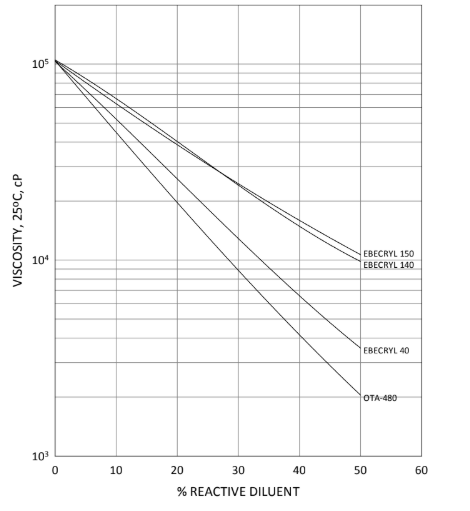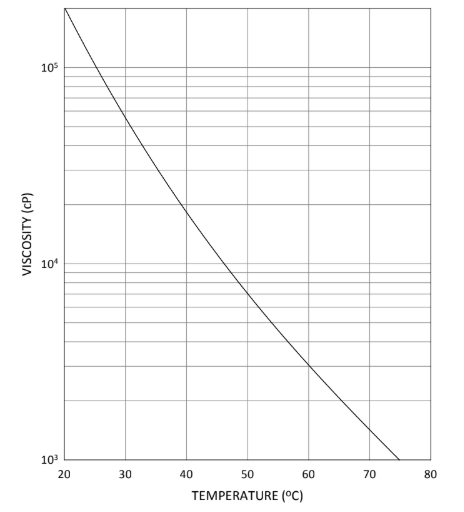Enhanced TDS
Identification & Functionality
- Blend
- No
- CASE Ingredients Functions
- Chemical Family
- Country of Origin
- Function
- Binder
- Product Code
- MITM00426
- Single Ingredient
- Yes
- Technologies
- Product Families
Features & Benefits
- CASE Ingredients Features
- Labeling Claims
- Performance Highlights
EBECRYL® 657 is characterized by:
- Good pigment wetting
- Excellent lithographic behavior
- Good anti-misting properties
UV/EB cured products based on EBECRYL® 657 are characterized by the following performance properties:
- Toughness
- Flexibility
- Low residual odor
Applications & Uses
- Application Method
- Coating End Applications
- Compatible Substrates & Surfaces
- Cure Method
- Ink & Toner End Applications
- Markets
- Applications
- Product Applications
Formulated UV/EB curable products containing EBECRYL® 657 may be applied via various coating methods, such as direct or reverse roll, and curtain coating. EBECRYL® 657 is recommended for:
- Lithographic inks and varnishes
- Coatings on paper, metal, and plastic
- Pigment grinding vehicles
Properties
- Physical Form
- Product Properties
- Toughness
- Flexibility
- Low residual odor
Technical Details & Test Data
- Technical Data
EBECRYL® 657 - Viscosity Reduction With Reactive Diluents

Graph I show the viscosity reduction of EBECRYL® 657 with the reactive diluents EBECRYL® 40, EBECRYL® 140 (ditrimethylolpropane tetraacrylate), EBECRYL® 150 (ethoxylated bisphenol A diacrylate), and OTA-480. Although viscosity reduction can be achieved with non-reactive solvents, reactive diluents are preferred because they are essentially 100 percent converted during UV/EB exposure to form a part of the coating or ink, thus avoiding solvent emissions. The specific reactive diluents used will influence performance properties such as hardness and flexibility.
EBECRYL® 657 - Viscosity vs. Temperature

Packaging & Availability
Principal Information
- Group Principal Number
- S000001
- Principal
Storage & Handling
- Storage Conditions
- Care should be taken not to expose the product to high temperature conditions, direct sunlight, ignition sources, oxidizing agents, alkalis or acids.
- This might cause uncontrollable polymerization of the product with the generation of heat.
- Storage and handling should be in stainless steel, amber glass, amber polyethylene or baked phenolic lined containers.
- Procedures that remove or displace oxygen from the material should be avoided.
- Do not store this material under an oxygen free atmosphere.
- Dry air is recommended to displace material removed from the container.
- Wash thoroughly after handling.
- Keep container tightly closed.
- Use with adequate ventilation.
Other
- Appearance
- Dark clear liquid
- Appearance (SDS)
- Liquid
- Color (SDS)
- Dark amber
- Item Number
- Odor (SDS)
- Ester acrylate
- Other Hazards
- Polymerization may occur from excessive heat, contamination or exposure to direct sunlight .
- Protect from Freezing
- Yes
- Temperature Control
- Yes
- USA/DOT UN Number
- Not Applicable
- Chemical Properties
Value Units Test Method / Conditions Acid Value max. 20.0 mg KOH/g mg KOH/g - Material Composition
Value Units Test Method / Conditions Oligomer Content 100.0 %(W/W) %(W/W) - Mechanical Properties
Value Units Test Method / Conditions Elongation at Break 23.0 % % UV cured, 125µm thick films Tensile Strength 4300.0 psi psi at break, UV cured 125 μ thick films Tensile Strength 4300.0 psi psi UV cured 125 µ thick films - Physical Properties
Value Units Test Method / Conditions Density 1.03 g/mL g/mL at 25°C Glass Transition Temperature (Tg) 33.0 °C °C Dynamic Mechanical Analysis (DMA) at break, UV cured 125 μ thick films Glass Transition Temperature (Tg) 33.0 °C °C Dynamic Mechanical Analysis (DMA) UV cured, 125μm thick films Storage Temperature 39.2-104.0 °F °F Viscosity 3000.0-4000.0 mPa.s mPa.s at 60°C - SDS Physical and Chemical Properties
Value Units Test Method / Conditions Boiling Point (SDS) min. 100.0 °C °C Density (SDS) 1.03 g/cm³ g/cm³ Partition coefficient n-octanol/water (SDS) 2.1 - OECD 117 at 23°C, n-octanol/water Solubility In Water (SDS) 5.0 g/L g/L at 20°C Vapor Pressure (SDS) 0.013 Pa Pa at 25°C Viscosity (SDS) 3000.0-4000.0 mPa.s mPa.s at 60°C, highly viscous liquid Volatile Content (SDS) max. 0.3 % % - Shelf Life & Stability
Value Units Test Method / Conditions Shelf Life 730.0 d d
